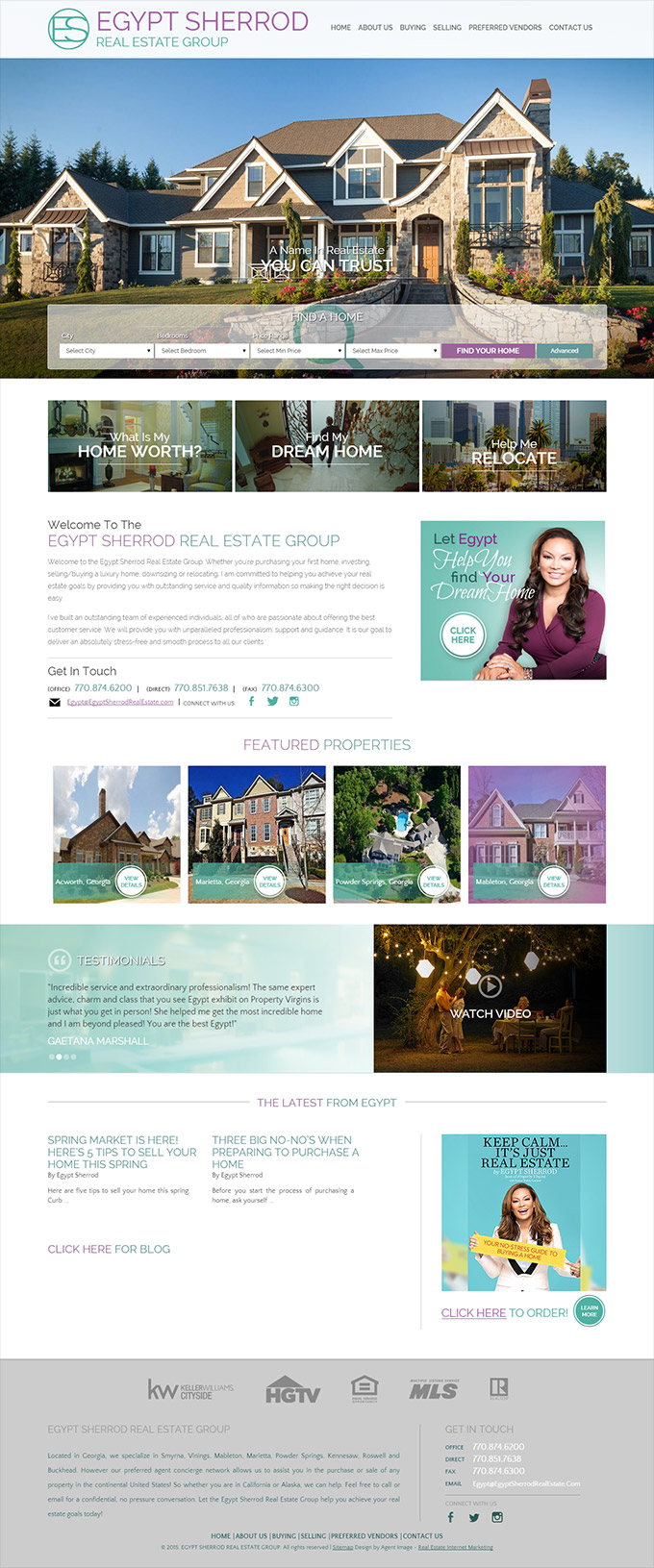5 Essentials for Your Real Estate Website Design
It wasn’t long ago that if potential homebuyers wanted to find a home they had to get in their cars and drive around the neighborhood looking for sale signs or spend their Saturday browsing the local paper for listings. In fact, if they wanted to find a real estate agent, they likely asked their neighbors, family or friends.
Today, it is easier than ever for homebuyers and real estate agents to connect online, but that means that the competition for that space is also fiercer than ever.
Every real estate agent worth his or her salt has a website to show off their listings and to share their background and services offerings with potential clients. Yet there are many who go about it this in the wrong way. The site is overloaded with distracting content, users struggle to search in the ways that they want, or there are dozens of blog posts that give no useful information to help prospective buyers and simply attempt to sell services.
The goal of your real estate website design should be to make it easy for visitors to find the information that they are looking for and to establish your relevancy and authority in the local market. In fact, according to the NAR 2014 Profile of Home Buyers and Sellers, for 43% of homebuyers the first step in their search process was looking online for properties, while 12 % first looked online for information about the home buying process.
We’ve put together these five essentials for real estate web design and Internet marketing to help you accomplish these goals and to help capture this large percentage of homebuyers who are turning to the Internet to find you and your properties!
Real Estate Website Design That Works
When you are building or upgrading your real estate website, here are the five must haves for web design that you may want to consider:
#1 Uncluttered Layout
The first thing that will either keep a user on your site or cause them to leave it is your web page layout. Too often real estate websites are too busy and the information is so cluttered that it confuses the viewer. You not only want visitors to click on your website but to stay and browse it.
Pick a web design that has an uncluttered layout. Not only is it more aesthetically pleasing but it makes it easier for users to navigate around the website when your site is uncluttered. You can put a search box, links to your blog, and property images on your homepage, but don’t jumble it all together.
Keep each section distinct so that users can click on each area to delve deeper.
TWEET THIS: Uncluttered real estate web design increases the probability of your clients staying on the site longer. #realestatemarketing #AgentImage
#2 Search-ability
To say that your web design should be searchable is not enough. There are many different ways to improve your search rankings, starting with getting your real estate website to pull up in search engines via proper Search Engine Optimization programs made for agents and brokers.
There are different SEO techniques you can implement. One way is to use keywords in your website content that is within your homepage, about page, and service pages that are consistent and unique. Another SEO technique is to have other websites reference your real estate site and provide a link back to your website.
The best way to accomplish this is by using reliable information in your content that is not found elsewhere. Cite statistics and market information from government surveys and studies that are not found on other websites. When homebuyers, sellers or potential clients are looking for specific data, your site will pull up in those searches and increase the chance of converting a new prospect.
#3 Organized Images
Every real estate website should have images for all of their properties, but just any old image will not do if you really want to have a first rate real estate website. Moreover, the manner in which you display those images on your page is crucial to attracting more viewers to your site. Choosing an IDX platform that best represents this vision is crucial.
Secondly, when marketing your own listings, consider having your photos done by a professional real estate photographer so that you get the highest quality images possible. Make sure that users can zoom in and zoom out on the image. It is also nice to include floor plan illustrations whenever possible. Lastly, make sure that your photos are not crowded all together. Many agents choose to use a main photo for each property but show the others once the selected property is clicked.
#4 Useful Information
Various studies indicate that more than 69% of North American marketers say dynamic, personalized content is important for their website. When you include quality content on your real estate site, whether via an informative blog or within your website’s pages, visitors will tend to stick around a while longer. Yet if your blog posts are bland, uninteresting, and lack quality information, they will not stay around for long. Create blog content that is engaging and useful to prospective buyers to best maximize your efforts.
TWEET THIS: 69% of marketers say dynamic, personalized content is king? How does your website hold up? #realestatemarketing #AgentImage
This serves multiple purposes. Not only does offering useful information on your real estate website keep the interest of your visitors, it also builds trust between you and your potential client. If you give them information that they can rely on, that reliability transfers to you and your personal brand as a whole.
Furthermore, if you provide statistics, up-to-date research, and the latest news about your particular market, you increase the chance of getting cited on other websites, improving your SEO capabilities. Make your blog posts fun and informative at the same time so that potential clients will come back time and again for more information.
#5 Mobile Capability
As more and more Internet users are getting online via their mobile devices as opposed to their desktop computers, all real estate websites have to have mobile capability. In fact, several marketing studies support the idea that 40% or more users say that if they arrive on a business site that isn’t working well on mobile, they take it as an indication that the business simply does not care. Is that the impression you want to give?
From the web design layout to the type of images that you use, there are different design options that can make your real estate website available anywhere your potential buyers are.
Getting Your Real Estate Web Design Right
You could try to build your own website using a free online web design app, but do you have the technical skills to cover all of the must haves? How much time would it take you to figure it out while your competitors continue to generate leads on you? There is an easier way to avoid all of the dos and don’ts of web design so that you get it done the right.
Here’s a great example of a recently completed website project for HGTV star Egypt Sherrod that encompasses many of the essentials we’ve talked about today.

At Agent Image, we specialize in crafting websites that will draw in traffic, make searching easier, and turn website viewers into clients. Don’t waste time reinventing the wheel – let us do it for you! Contact our real estate marketing strategists today for more information and a free site analysis of your existing site!



